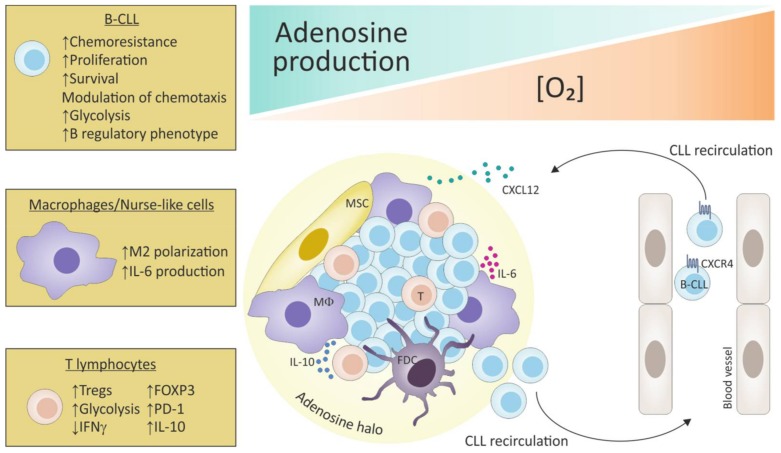Figure 3.
Adenosine-mediated immunosuppression in the CLL lymphoid niche. CLL cells can recirculate from the periphery to lymphoid organs following chemokine gradients, including CXCL12. Once in the tumor niche, leukemic cells are in closed contact with macrophages (MΦ)/nurse-like cells, mesenchymal cells (MSC), follicular dendritic cells (FDC) and T lymphocytes. These areas are characterized by low oxygen tension and high concentrations of ADO, which forms a halo able to protect CLL cells from the effects of chemotherapy, while increasing proliferation, survival and shifting their metabolism towards a glycolytic one. At the same time, ADO skews T cells and macrophages towards an immune-tolerant and CLL-supportive phenotype, mediated also through the secretion of specific cytokines (IL-6/IL-10).

